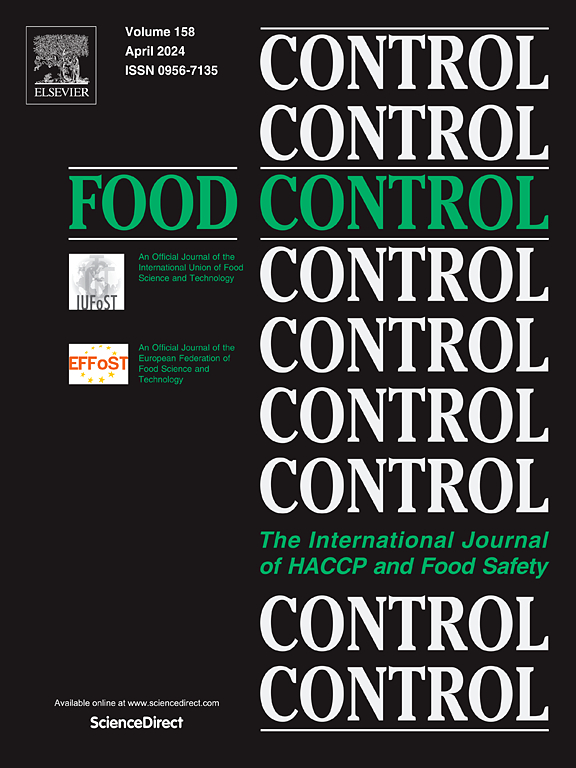Widely targeted metabolomics analysis unveils the underlying mechanism of starch/carboxymethyl cellulose-based photodynamic antimicrobial packaging in delaying quality deterioration of snap beans
IF 5.6
1区 农林科学
Q1 FOOD SCIENCE & TECHNOLOGY
引用次数: 0
Abstract
Snap beans (Phaseolus vulgaris L.) have high nutritional value but are susceptible to senescence and spoilage after harvest. Previously, a carboxymethyl cellulose/starch-based photodynamic film (CCPF) was shown to delay the senescence process and maintain the storage quality of snap bean pods (SBPs). However, the mechanism of the CCPF effect on the preservation of snap beans remains unclear. This study first confirmed the beneficial effects of CCPF packaging on the appearance and nutritional quality of SBPs and microbial growth inhibition. Then, the regulatory mechanism by which CCPF packaging impacts the physiological metabolism of postharvest SBPs was investigated via widely targeted metabolomics. The results revealed 1802 metabolites in total SBP samples, among which 464 metabolites were significantly different between SBPs packaged with the CCPF and those packaged with a pure carboxymethyl cellulose/starch-based film (CCF) in the dark. It was found that CCPF packaging could delay the deterioration of the quality of SBPs by regulating the synthesis and decomposition of phenolic acids, flavonoids, lipids, amino acids and derivatives in postharvest SBPs. Kyoto Encyclopedia of Genes and Genomes pathway analysis revealed that compared with CCF packaging, CCPF packaging delayed the postharvest senescence of SBPs by affecting three potential metabolic pathways (isoflavone biosynthesis, flavonoid biosynthesis and nicotinate and nicotinamide metabolism), maintaining the storage quality of snap beans. This study revealed the possible mechanism by which CCPF packaging maintains the postharvest storage quality of snap beans.
求助全文
约1分钟内获得全文
求助全文
来源期刊

Food Control
工程技术-食品科技
CiteScore
12.20
自引率
6.70%
发文量
758
审稿时长
33 days
期刊介绍:
Food Control is an international journal that provides essential information for those involved in food safety and process control.
Food Control covers the below areas that relate to food process control or to food safety of human foods:
• Microbial food safety and antimicrobial systems
• Mycotoxins
• Hazard analysis, HACCP and food safety objectives
• Risk assessment, including microbial and chemical hazards
• Quality assurance
• Good manufacturing practices
• Food process systems design and control
• Food Packaging technology and materials in contact with foods
• Rapid methods of analysis and detection, including sensor technology
• Codes of practice, legislation and international harmonization
• Consumer issues
• Education, training and research needs.
The scope of Food Control is comprehensive and includes original research papers, authoritative reviews, short communications, comment articles that report on new developments in food control, and position papers.
 求助内容:
求助内容: 应助结果提醒方式:
应助结果提醒方式:


